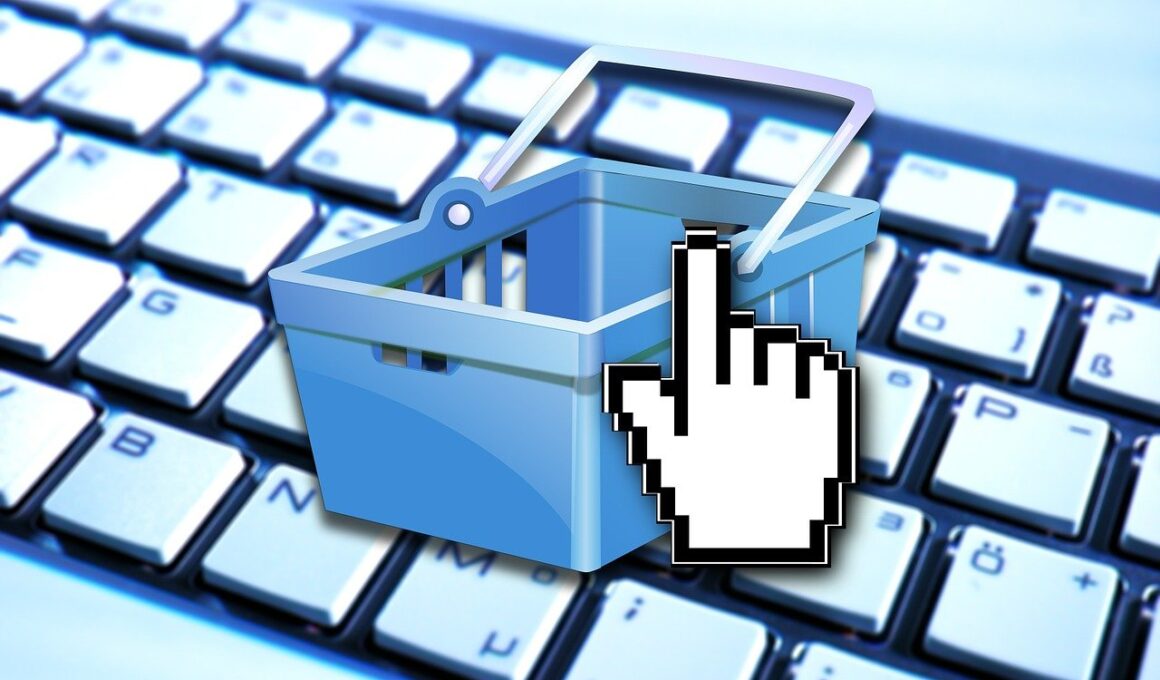How to Effectively Implement Up-Selling in Retail Stores
In the competitive world of retail, mastering up-selling techniques is essential for boosting sales and enhancing customer satisfaction. Up-selling involves encouraging customers to purchase a more expensive item or add-ons to their initial purchase, significantly increasing the average transaction value. To implement effective up-selling strategies, retailers should train their staff thoroughly. Knowledgeable employees who can confidently recommend products based on customer needs will significantly improve sales. Additionally, retailers must ensure that product placements are strategic, making it easier for customers to notice higher-tier options. Upselling isn’t merely about making sales; it’s about addressing customer needs. By understanding customer preferences and behaviors, sales staff can suggest complementary products that genuinely enhance the customer’s experience. Incorporate technology to assist in tracking customer purchases and preferences. This data-driven approach allows for targeted promotions, personalized suggestions, and a more engaging shopping experience. In today’s digital age, incorporating an online platform can also streamline up-selling techniques within a broader omnichannel strategy. By integrating physical and digital shopping experiences, retailers can capitalize on opportunities to guide customers towards premium product choices, ultimately increasing revenue.
Along with incorporating technology, retailers can leverage their in-store layout and design to enhance up-selling opportunities. A well-thought-out retail space can significantly influence purchasing decisions. For example, strategically placing up-sell products near the checkout can tempt customers to consider higher-value alternatives as they finalize their purchases. It is essential to create attractive displays that highlight premium products, showcasing their unique benefits. Additionally, utilizing attractive signage and price comparison can effectively communicate the value of up-sell products. Upselling becomes more effective when combined with promotions and discount strategies. For instance, offering discounts on complementary items or loyalty rewards can encourage customers to explore additional purchases. Staff incentives for successful up-sells can further motivate employees to engage customers effectively. Moreover, setting clear goals and regularly monitoring sales performance can help refine up-selling techniques over time. Feedback sessions with employees can identify what works and what needs improvement. By encouraging communication and sharing experiences, a collaborative retail environment enhances learning and growth. Engaging customers on social media platforms can also lead to significant up-selling potential, allowing retailers to share promotions and product benefits directly with their audience.
Creating Personalized Experiences
Another crucial aspect of successful up-selling is providing personalized customer experiences. Today’s consumers value personalized interactions more than ever, which is where leveraging data becomes vital. Tracking customer purchase history and preferences enables staff to tailor their recommendations effectively. For instance, if a customer frequently buys a specific brand of skincare products, suggesting a premium product or an add-on from that line can create a compelling offer. Personalized communication can significantly enhance customer loyalty and encourage repeat purchases. Retailers should employ digital tools that collect customer data responsibly while ensuring privacy and security. Communication methods, including email marketing and targeted promotions, can also create a tailored experience for customers. Sending personalized offers based on past purchases or reminding customers of items they viewed can drive additional sales. Another approach is staging events or online webinars that allow customers to experience premium products firsthand. These exclusive experiences create a strong emotional connection with the product, making customers more likely to consider higher-value purchases. By fostering strong relationships and showing genuine interest in customer preferences, retailers build trust, improving the likelihood of success in up-selling.
To further improve up-selling efforts, retailers must utilize feedback from their customer base. Regular surveys and feedback forms provide essential insights into customer satisfaction and preferences. Understanding customer pain points can help in refining product offerings and up-selling strategies. Additionally, implementing customer loyalty programs can reward customers for repeat purchases and encourage them to explore premium products. For example, offering points for purchases that can be redeemed on future transactions increases the value of higher-tier purchases in the eyes of consumers. Showcasing testimonials or reviews from satisfied customers on premium products can also serve as a persuasive tool in up-selling. When potential buyers witness previous customers’ positive experiences, they may exhibit less hesitation when considering higher-priced items. Training sessions that focus on role-playing customer interactions can enhance the skills of sales associates in effectively engaging with customers, addressing objections, and generating interest in premium options. Such practical training arms staff with essential tools to facilitate positive customer interactions, ultimately leading to more successful up-sell transactions. An empowered team is key to maximizing the impact of effective up-selling strategies across the retail store.
Utilizing Technology for Up-Selling
Implementing innovative technology can play a pivotal role in enhancing up-selling strategies in retail. Retailers should consider incorporating mobile apps that assist customers in exploring product options, comparisons, and tailored recommendations. For instance, a mobile app could showcase suggested products based on user preferences and purchase behavior, thus making up-selling seamless. In-store tablets or kiosks can also serve to educate customers about higher-tier products, informing them of their unique benefits over standard offerings. Additionally, utilizing augmented reality (AR) can enhance the shopping experience by allowing customers to visualize how premium products fit their needs. Providing engaging customer experiences through technology helps demystify premium products, making upselling more effective. Integrating Point of Sale (POS) systems that enable staff to quickly access customer data can significantly streamline the personalization process. This instant access allows for timely recommendation and engagement tailored to each customer’s buying history. Furthermore, investing in reliable Customer Relationship Management (CRM) software can provide comprehensive insights into customer interactions, preferences, and purchasing behavior. This understanding facilitates more strategic communication and product recommendations, thus improving overall up-selling performance.
Absorbing customer feedback is imperative for continuous improvement in up-selling methodologies. Retailers must create an open line of communication between customer service representatives and management, ensuring that sales staff can express challenges and insights. Regular training on new products and emerging up-selling techniques will equip retail employees with the necessary tools to improve their performance. Establishing channels for team collaboration can drive innovation and share successful strategies within the store. For instance, discussing best practices in weekly staff meetings enables knowledge transfer and helps teams learn from each other’s experiences. Additionally, retailers should motivate employees through recognition and rewards for successful up-selling efforts. Creating a culture that values customer relationships and emphasizes the importance of up-selling to the overall sales strategy leads to higher motivation and engagement on employees’ part. Highlighting successful case studies of prior up-selling techniques can inspire the team to exceed their sales goals. As a final measure, continuously monitoring sales performance against established benchmarks allows management to identify areas that require attention and improve overall strategies. Success in retail up-selling requires a systematic approach that balances technology and personal service.
Conclusion
In summary, implementing effective up-selling techniques in retail requires a comprehensive strategy incorporating various elements. Retailers must prioritize employee training, product placement, and the use of technology while fostering relationships with customers. By personalizing recommendations and utilizing data-driven insights, retailers can refine their up-selling efforts and improve the customer experience. Moreover, integrating innovative techniques such as AR or mobile applications will position the retail business at the forefront of customer engagement. Continuous improvement through customer feedback and performance evaluations plays a vital role in enhancing the effectiveness of up-selling strategies. The synergy between personalized service, employee empowerment, and technology creates a thriving retail environment where customers feel valued and understood. Investing in effective up-selling techniques influences customer loyalty and business profitability in the long run. When customers perceive real value in premium offerings, they are more inclined to make additional purchases, significantly driving store revenue. With a consistent focus on customer satisfaction and an emphasis on quality recommendations, retailers can successfully implement up-selling as a core aspect of their sales strategy, fostering strong relationships while maximizing growth potential.
This final paragraph wraps up our exploration of effective retail up-selling techniques. Armed with insights on training, technology, and personalization, retailers now have the tools to implement these strategies. By creating exceptional shopping experiences, they can not only increase revenues but also foster long-term relationships with their customers. As the retail landscape continues to evolve, adapting up-selling efforts will be essential. Every staff interaction becomes an opportunity to deepen customer engagement and create added value. The journey of perfecting up-selling techniques is on-going, requiring refinement and evolution as customer preferences change. Retailers committed to this process will stand out in a crowded market by meeting and exceeding customer expectations. Customers appreciate genuine suggestions that align with their interests. Thus, they are more likely to make premium purchases when they feel understood. Ultimately, successful up-selling blends expert knowledge, technological support, and dedicated customer service. This multi-faceted approach is integral to achieving success in the retail sector. Engaging with customers effectively can transform their shopping experience and strengthen brand loyalty, ensuring that both customers and retailers yield significant benefits.


